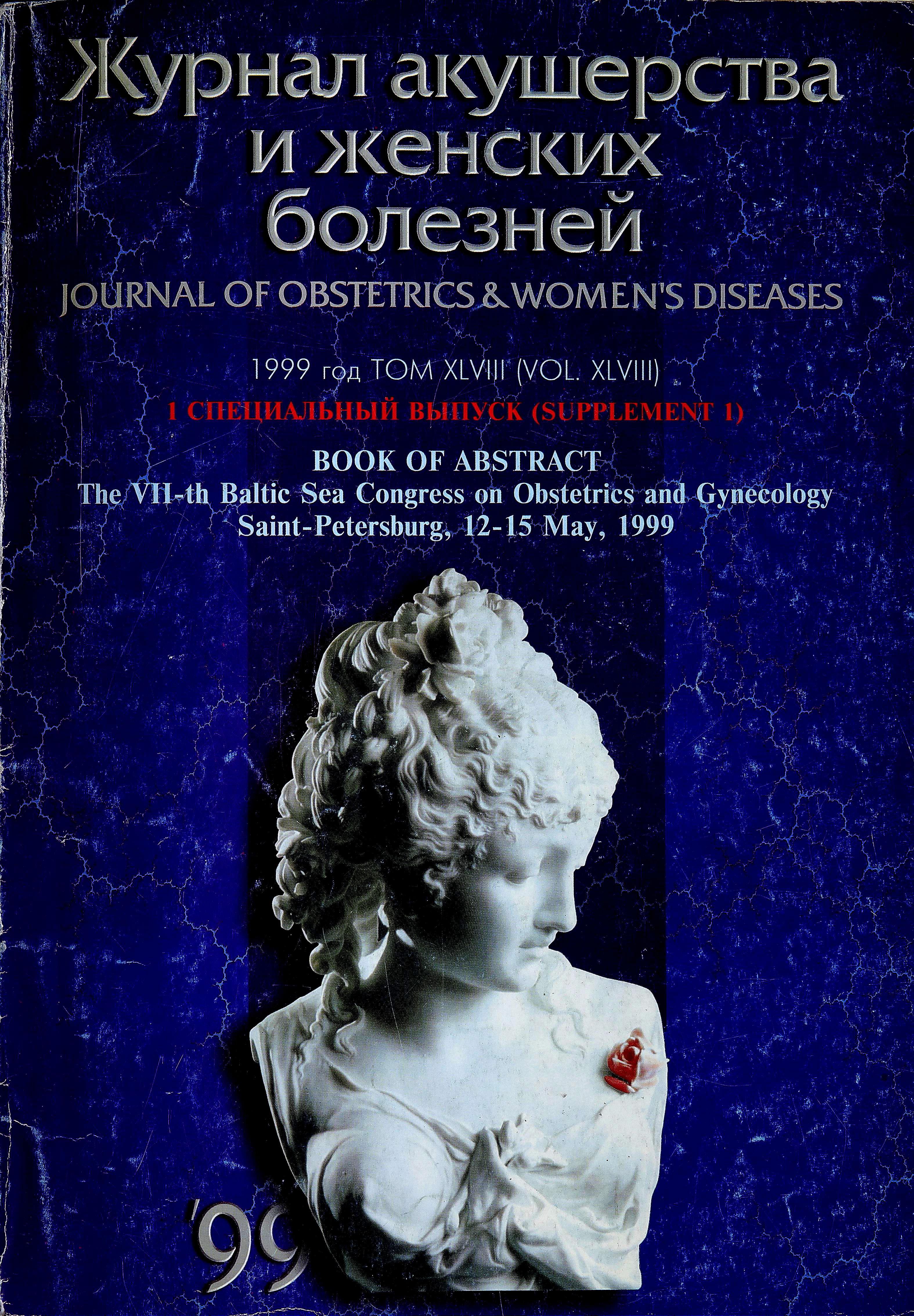Metabolic control in pregnant women with insulin dependent diabetes mellitus and the neonatal body weight
- 作者: Lantseva O.E.1, Potin V.V.1, Kovaleva T.G.1, Kuptsov G.D.1
-
隶属关系:
- D.O. Ott Institute of Obstetrics and Gynecology, Russian Academy of Medical Sciences
- 期: 卷 48, 编号 5S (1999)
- 页面: 96-96
- 栏目: Articles
- ##submission.dateSubmitted##: 17.02.2022
- ##submission.dateAccepted##: 17.02.2022
- ##submission.datePublished##: 15.12.1999
- URL: https://journals.eco-vector.com/jowd/article/view/101045
- DOI: https://doi.org/10.17816/JOWD101045
- ID: 101045
如何引用文章
全文:
详细
In order to outline factors affecting the neonatal weight we analyzed the course and outcome of 227 pregnancies in women with insulin dependent diabetes mellitus (IDDM) who gave birth to liveborn babies in 1989-1997years. Mean age of patients was 24.9±0.3 years, mean duration of diabetes 10.5±0.4 years. In 88 women (38.8%) microvascular diabetes complications were present. The transition from conventional to intensive insulin therapy took place on the average at 13.6±1.2 weeks of pregnancy.
全文:
In order to outline factors affecting the neonatal weight we analyzed the course and outcome of 227 pregnancies in women with insulin dependent diabetes mellitus (IDDM) who gave birth to liveborn babies in 1989-1997years. Mean age of patients was 24.9±0.3 years, mean duration of diabetes 10.5±0.4 years. In 88 women (38.8%) microvascular diabetes complications were present. The transition from conventional to intensive insulin therapy took place on the average at 13.6±1.2 weeks of pregnancy. The mean blood glucose values were calculated weekly and varied from maximal - 7.4± 0.2 mmol/l during the first trimester to minimal - 5.8±0.3 mmol/l - during the third trimester of pregnancy. 11.2% of patients had pregnancy- induced hypertension or proteinuria and 26.4% - preeclampsia (defined as pregnancy-induced hypertension and proteinuria). The mean time of delivery was 36.1±0.1 weeks. Three groups were distinguished according to the neonatal body weight (correspondence to standard meanings of weight and gender for the given gestational age was taken into account: I - infants with low for gestational age birthweight (<25 centiles) - 13 (5.7%); II - infants with appropriate for gestational age birthweight (25-75 centiles) - 52 (22.9%); III - infants with large for gestational age birthweight (>75 centiles) - 162 (71.4%). Mean levels of glycemia during pregnancy were similar in three groups. A negative correlation was observed between the birthweight and the presence of microvascular diabetes complications (r=—0.34, p<0.001) and between birthweight and frequency and degree of preeclampsia (r=—0.38, p<0.001). We also found a positive correlation between presence of diabetes complications and frequency and degree of preeclampsia (r=0.41, p<0.001). Mean levels of glycemia during first trimester of pregnancy correlated with frequency and degree of preeclampsia (r=0.55, p<0.05). Thus, these data suggest that the main factors lowering the neonatal weight in IDDM women are: the presence of microvascular diabetes complications and preeclampsia. The incidence of preeclampsia is connected with the level of metabolic control during the first trimester of pregnancy.
作者简介
O. Lantseva
D.O. Ott Institute of Obstetrics and Gynecology, Russian Academy of Medical Sciences
编辑信件的主要联系方式.
Email: info@eco-vector.com
俄罗斯联邦, St. Petersburg
V. Potin
D.O. Ott Institute of Obstetrics and Gynecology, Russian Academy of Medical Sciences
Email: info@eco-vector.com
俄罗斯联邦, St. Petersburg
T. Kovaleva
D.O. Ott Institute of Obstetrics and Gynecology, Russian Academy of Medical Sciences
Email: info@eco-vector.com
俄罗斯联邦, St. Petersburg
G. Kuptsov
D.O. Ott Institute of Obstetrics and Gynecology, Russian Academy of Medical Sciences
Email: info@eco-vector.com
俄罗斯联邦, St. Petersburg
参考
补充文件





